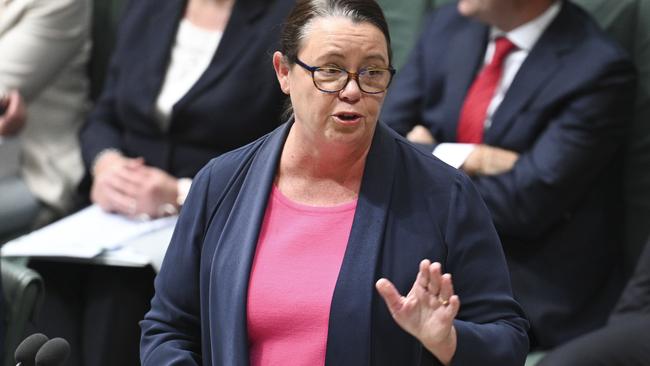Nickel and lithium exports slide, as uranium demand surges
Nickel and lithium export earnings are on track to be slashed by almost half amid plunging global prices, over-supply fuelled by China and rapid EV sales slowdown in the US and Europe.

Nickel and lithium export earnings are on track to be slashed by almost half from a combined value of $25.1bn to $13.7bn amid plunging global prices, oversupply fuelled by China and the rapid slowdown in electric vehicle sales in the US and Europe.
New Department of Industry and Resources forecasts released on Thursday reveal lithium and nickel export revenues will drop to $11.3bn and $2.4bn, down from $20.1bn and $5bn in 2022-23.
In contrast, uranium export earnings are set to double on the back of increasing global nuclear power demand.
After nickel and lithium prices crashed to five-year lows, the government has scrambled to keep lithium, nickel, rare earths and critical minerals mines and projects viable under Labor’s plan for Australian resources to underpin the global energy transition.
The March quarterly report warns resources and energy earnings are easing due to weaker global demand, with commodity export revenue of $417bn in 2023-24 projected to be 10 per cent lower than the previous year. By 2028-29, earnings will fall to around $300bn.
Resources Minister Madeleine King said despite near-term pain, the medium-term outlook for Australian lithium and nickel exports remained “substantial”.
In addition to rapid declines in the cost of lithium-ion batteries, there has been a slower than expected take-up of electric vehicles across the US and EU, influenced by high price tags, lack of charging infrastructure and concerns over vehicle range.
While Australia still boasts a 16 per cent share of the global nickel trade market and is among the world’s top five exporters, local miners have been pummelled by low prices fanned by Indonesian and Chinese oversupply.
The government expects the global nickel surplus, which slashed 40 per cent from prices in the 12-months to February, will persist over the next few years. There is optimism that surging demand for new low-emissions technologies will improve the longer-term outlook, with Australian nickel exports rising to around $4.4bn by 2028-29.
Lithium export earnings are “projected to fall more than half over the forecast period – from $21bn in 2022-23 to $9bn in 2028-29 (in real terms)”.
“This is driven by a revised lower price forecast, though prices are highly difficult to predict given the rapid pace of supply and demand growth. Lower prices are expected to be partially offset by the impact of a projected 70 per cent increase in Australia’s lithium mine production over the period,” the report states.
“Global lithium demand is projected to more than double between 2023 and 2029, driven by the rising adoption of electric vehicles. However, evolving battery technologies could reduce lithium usage in batteries. Global lithium supply is projected to broadly keep pace with rising demand, with sizeable project pipelines among large producers (such as Australia and China) as well as among new and emerging producers (such as Argentina and Zimbabwe).”
The report states that “supply disruptions and renewed interest in nuclear power” have pushed uranium prices above $US100 a pound.
“Price pressures are expected to persist through the full outlook period, with the price settling at $US109 a pound (in real terms) by 2029. Price and volume growth are projected to lift Australian export values from $0.8bn in 2022–23 to $2bn by 2028–29.”
Ms King said while China remained a major influence on global resource and energy commodity markets, India was “likely to account for a significantly larger share of world commodity demand by 2029”.
“While global prices are easing, the (report) shows demand is likely to be sustained for commodities used in low-emissions technologies, including iron ore, copper, aluminium and lithium,” Ms King said. “The road to net zero runs through Australia’s resources sector. Our resources and energy industries support more than 300,000 Australian jobs directly and indirectly, supporting regional communities and our national economy.”
Iron ore remains Australia’s top resources export with earnings of $136bn in 2023-24, which will decline to $111bn the following year and $83bn by 2028-29. Gas and coal export values, which surged following Russia’s invasion of Ukraine, will also fall.
Metallurgical coal exports will reduce from $62bn to $56bn this financial year, while thermal coal drops from $66bn to $36bn. LNG earnings will hit $72bn, down from $96bn billion last year, before easing to $45bn by 2029.
Jim Chalmers said falling resources earnings are a “timely reminder that revenue upgrades in the May budget will be substantially smaller”.
“While the resources and energy sectors continue to make a big contribution … we shouldn’t expect to see upgrades to government receipts of the same extent as in our recent budgets,” the Treasurer said.




To join the conversation, please log in. Don't have an account? Register
Join the conversation, you are commenting as Logout